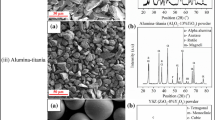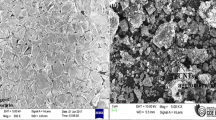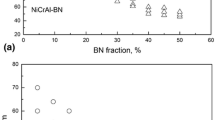Conclusions
A single-component ceramic coating produced by plasma-spraying a powder mixture consisting of 85% of 5–30-μ particles and 15% of 70–110-μ particles exhibits improved thermal-cycling resistance, because the dispersed inclusions of the coarse fraction present in the coating hinder crack propagation and coating rupture. The chemical identity of the fine and coarse fractions has a beneficial effect on the properties of the coating.
Similar content being viewed by others
Literature cited
A. N. Krasnov, V. G. Zil'berberg, and S. Yu. Sharivker, Low-Temperature Plasma in Metallurgy [in Russian], Metallurgiya, Moscow (1970).
É. Krechmar, Spray Deposition of Metals, Ceramics, and Plastics [in Russian], Mashgiz Moscow (1958).
D. M. Karpinos, V. G. Zil'berberg, et al., Composite Fiber Materials [in Russian], Nauka, Kiev (1970).
Author information
Authors and Affiliations
Additional information
Translated from Poroshkovaya Metallurgiya, No. 10 (106), pp. 46–48, October, 1971.
Rights and permissions
About this article
Cite this article
Karpinos, D.M., Zil'berberg, V.G. Ceramic coatings of high thermal-cycling resistance. Powder Metall Met Ceram 10, 802–803 (1971). https://doi.org/10.1007/BF00794171
Received:
Issue Date:
DOI: https://doi.org/10.1007/BF00794171




